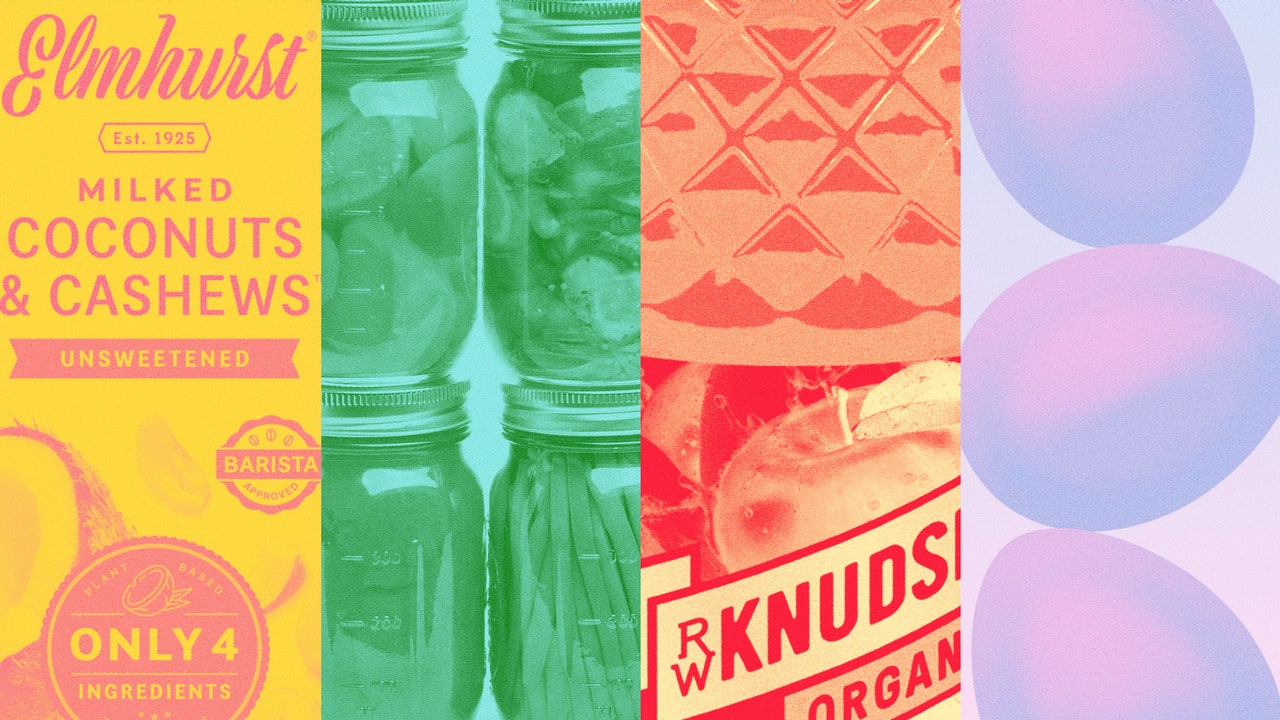VanHoose keeps it in her fridge overnight, allowing the coconut cream to separate from the water, and then stores each element separately. She uses the liquid in smoothies and adds the cream to coffee, greens (for a play on creamed spinach), and soups.
Frozen green beans
While many raw vegetables can be triggering for folks with UC, cooked, canned, and thin-skinned produce, such as green beans, tend to be easier to manage. “To ensure I get enough vitamins and fiber, I always have vegetables in the fridge or freezer. I enjoy fresh produce, but I also stock up on the kind in microwavable bags,” VanHoose says, noting this shortcut can be helpful for folks with chronic illnesses. “Fatigue can be very real for those with IBD, even in remission. Microwaved veggies are better than no veggies,” she says. VanHoose transforms green beans into salad and soups, as well as heartier dishes like her go-to green bean casserole.
R.W. Knudsen apple juice
“This is my secret to adding natural sweetness to sauces, soups, and even the homemade ketchup recipe I use to top my turkey meatloaf. I look for brands that have no added sugars, flavors, or colors,” VanHoose says. She’s found that limiting preservatives and chemicals helps keep flares at bay. “R.W. Knudsen is one of the only brands at my supermarket that checks all those boxes,” she says.
Pickled fruits and veggies
VanHoose says that her dietitian suggests regularly eating fermented foods to help restore and maintain her gut health. “Besides offering gut-supporting probiotics, pickled veggies are softer than raw and are easier on my digestive system,” she says. “I love making my own dill pickles to add a tart element to cheese trays or relish for deviled eggs, or to simply snack on.” Pickled peaches and onions are also staples in her rotation and are used to complement dishes she enjoys, such as grilled pork chops and Korean-inspired beef bowls.
Cauliflower
VanHoose finds that a grain-free diet helps her manage inflammation, so she frequently uses cauliflower rice as a substitute for regular rice. Since frozen cauliflower rice often cooks up into a watery mess, she opts to make it herself. Her go-to method: Cutting the cauliflower into bite-size pieces, tossing it in olive oil, and roasting it on a sheet pan at 400°F for 15 to 20 minutes. Then, after it’s cooked down slightly, she places it in a food processor and gives it a few quick pulses. “When you do it like this, there’s no more getting little pieces of cauliflower everywhere, and the texture is perfect,” VanHoose says.
Eggs
Eggs are easy to digest and are a staple for baking and savory dishes, says VanHoose. “Breakfast for dinner is on heavy rotation in my home, and these come in handy for almond flour waffles, butternut squash hash, muffins, and many of my favorite grain-free quick breads and cakes.”
Mushrooms
“There’s something irresistible about a caramelized mushroom that’s pan-seared or sautéed in a cast-iron skillet,” VanHoose says. “It takes me back to my sous chef days; the assorted mushroom side dish was a menu staple.”
Besides being delicious, mushrooms are a prebiotic, a type of fiber that acts as food for good gut bacteria. The uses of the veggie are endless, but VanHoose recently used the ones in her fridge to whip up her go-to chicken marsala recipe. For an IBD-friendly spin, instead of all-purpose flour, she relies on coconut flour to coat the chicken before searing it in the pan. “It also helps thicken the sauce,” she says.
